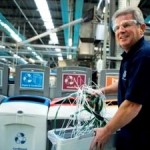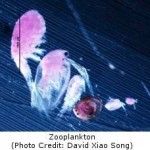
In March this year, The Designers Accord – a global coalition of designers, educators, and business leaders – partnered with Biomimicry Institute and Biomimicry Guild and launched “Biomimicry Challenge: What Would You Ask Nature?” This drew dozens of real-world business problems submitted by companies from all over the world. In the end, three challenges were assigned to three solution provider firms, and each was paired with a biologist. Each team reported their bio-inspired case-studies & solutions, which were showcased on FastCompany.com. Here, we present one such bio-inspired solution provided by the New York-based solution provider firm, Smart Design, for IBM’s SmartCity Initiative.
IBM’s SmarterCity Initiative is a program that uses the company’s information technology to help municipal governments create healthier, more intelligent urban environments for their residents. Using their ability to collect and analyze data, IBM is able to provide information about elements of daily city life ranging from weather and traffic to water usage and air quality. But what they’ve done with that data has largely been used to make policy and economic decisions. IBM appealed to “Biomimicry Challenge: What Would You Ask Nature?”, asking how they could use nature to understand how these overlays of information could help guide residents toward making better personal decisions for the good of the city. A New York-based team at Smart Design accepted their challenge.
After having a discussion with IBM, and walking through some day-in-the-life exercises that explored issues facing urban dwellers, Smart chose to focus on water conservation. Because of the complexity surrounding its systems, water is often misunderstood, says Tucker Fort, Smart Design’s Director of industrial design. “But unlike something like energy, it’s a finite resource.” Water was also something that residents interacted with everyday, and since IBM’s goal was to make cities more responsive and resilient, using a biomimetic approach for encouraging more responsible water usage could have a real impact when implemented across an entire municipal area. Smart Design zeroed in on urban water consumption to explore how nature could inspire relevant, everyday solutions for city inhabitants to conserve water.

To immerse themselves in a biomimetic mindset, Fort, along with Director of interaction design Ted Booth, and their team consisting of Whitney Hopkins, Colin Kelly, Anton Ljunggren, and Stephanie Yung, were introduced to the emerging discipline of biomimicry by their BaDT (biologist at the design table) Mark Dorfman. After a biomimicry primer, the team engaged in a blind-folded exercise where they were encouraged to smell, taste, touch, and listen to nature – anything that would break them of their reliance on vision. This is something Dorfman calls “quieting our cleverness”. “If I were to show you a pine cone, you would see it and immediately know what it is, and that might be the end of your curiosity and exploration,” says Dorfman. “But if you’re blind-folded and handed a pine cone, you’ll have to explore its shape, texture, smell, before figuring out what it is.” The hope is that this process will open the designer’s mind to viewing living things through a functional lens – a way that is particularly relevant to solving design challenges.

Visits to two urban greenways, the High Line and Hudson River Park, near Smart Design’s offices, provided an opportunity to use this sensual awareness while focusing intently on natural solutions. Reframing the challenge as a functional approach, the designers asked themselves questions like “How does nature store water?” and “How does nature collect water?” Through Dorfman’s story-telling and by looking at examples on the AskNature.org site, they learned about examples that ranged from the corky tuber, a giant 700-pound water-filled tuber that grows under the ground yet throws out a few tiny shoots on the surface to alert animals about its water levels, to the ways that camels self-regulate water consumption due to availability.
Although the designers were inspired by the natural examples, they quickly found a more actionable solution in the Life’s Principles; a chart created by the Biomimicry Guild to illustrate how the earth regulates and conserves resources within its own giant ecosystem. Examining this representation of nature’s complex systems, the designers realized that their solution would not come directly from an organism, but from this entire system as a whole: These core principles for life could work as a metaphor for a city, inspiring and informing solutions to make a healthier and smarter environment.

Click here to view the illustration in a larger size. The understanding of Life’s Principles is constantly evolving; please visit www.biomimicryinstitute.org to ensure you have the most current representation.









